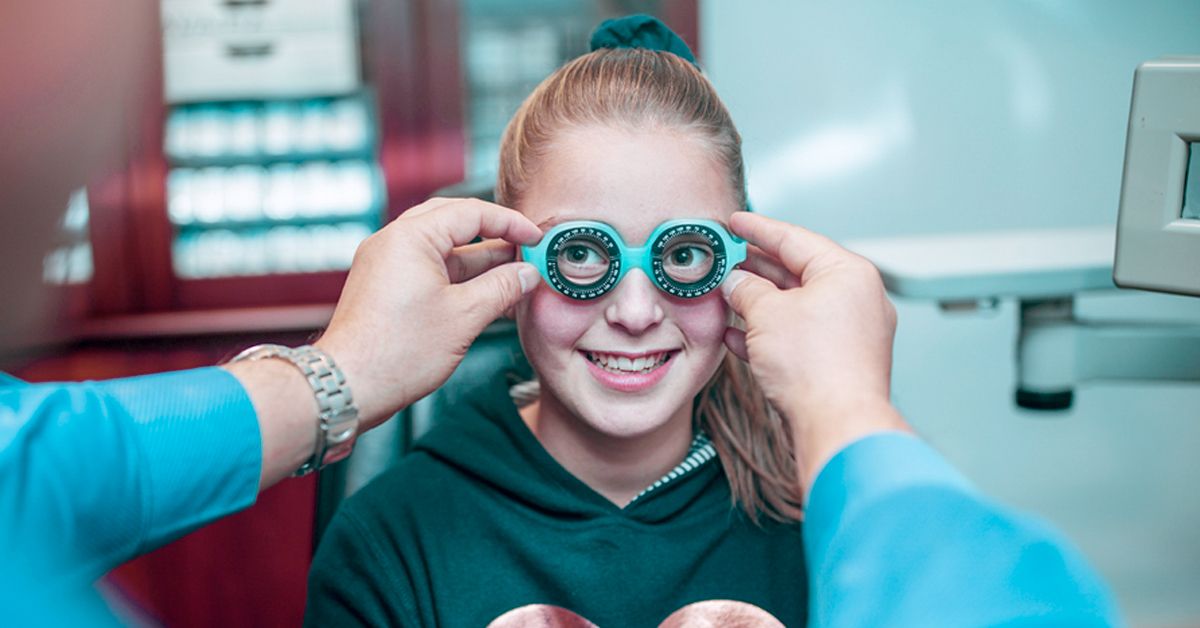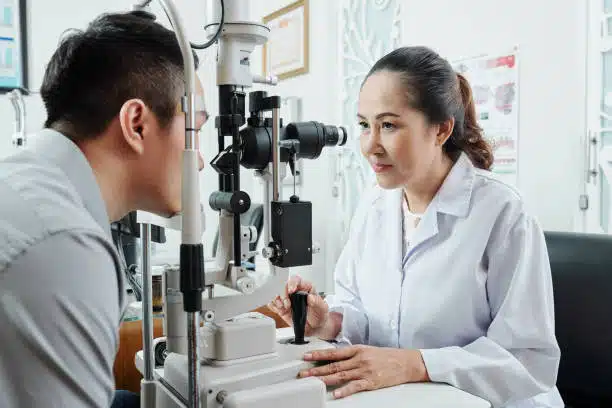Leading Factors to Go To an Optometrist Chino for Your Eye Health
Leading Factors to Go To an Optometrist Chino for Your Eye Health
Blog Article
Discovering the current Technological Developments in Optometry and What They Mean for Eye Doctors
In the ever-evolving field of optometry, recent technological improvements are improving how specialists come close to eye care. From the accuracy of Optical Comprehensibility Tomography to the nuanced understandings provided by AI-driven analysis tools, these advancements are setting brand-new requirements in client analysis and therapy. Teleoptometry is poised to redefine accessibility, ensuring that competence transcends geographical limitations. As these advancements penetrate the technique, optometrists are confronted with the difficulty of embracing these devices to enhance person end results. The question continues to be: just how will these technical changes redefine the duties and obligations within the career?
Technologies in Diagnostic Equipment
Advancing the area of optometry, technologies in diagnostic devices have actually changed the way eye treatment professionals examine and diagnose visual disabilities and eye problems. The previous decade has observed significant technical developments, allowing more precise and extensive analyses. Optical Coherence Tomography (OCT), as an example, offers high-resolution cross-sectional photos of the retina, permitting the very early detection of conditions such as glaucoma and age-related macular deterioration. This non-invasive imaging strategy has ended up being vital in modern optometric technique.
An additional secret advancement is the intro of advanced corneal topography systems, which map the surface area curvature of the cornea with precision. These tools are specifically beneficial for suitable call lenses and identifying corneal conditions. Moreover, digital retinal imaging has actually changed traditional ophthalmoscopy, supplying in-depth, scenic views of the retina that help with complete visual examinations.
The growth of wavefront aberrometry has actually also been crucial, enabling the analysis of refractive mistakes with unmatched accuracy (Eye Doctor). This technology assists in personalizing rehabilitative lenses and enhancing surgical outcomes for refractive surgeries. Collectively, these diagnostic improvements equip optometrists to deliver superior individual care, ensuring early intervention and customized therapy strategies, ultimately improving aesthetic health and wellness end results
AI in Individual Administration
Building on the structure of cutting-edge analysis tools, the consolidation of artificial knowledge (AI) in individual administration stands for a transformative jump for optometry. AI systems are progressively employed to boost efficiency, precision, and customization in individual care. By assessing vast quantities of information, AI can determine patterns and predict possible eye conditions, allowing eye doctors to customize treatments extra properly. This ability is important in managing chronic eye illness such as glaucoma and diabetic retinopathy, where very early detection and continuous tracking are essential.
Additionally, AI-driven platforms help with streamlined individual communications and administrative procedures. Automated scheduling, online assessments, and individualized follow-up plans not just boost client complete satisfaction however likewise enhance time administration for experts. These systems can triage individuals based upon the urgency of their conditions, guaranteeing that those in crucial demand obtain prompt attention.
Moreover, AI boosts decision-making by providing optometrists with evidence-based referrals and treatment pathways. By integrating data from electronic wellness documents, AI devices offer insights that inform professional decisions, decreasing the risk of mistakes and improving client outcomes. As AI proceeds to progress, its function in individual monitoring will likely increase, reshaping the landscape of optometric treatment.
Advances in Retinal Imaging
In the realm of optometry, retinal imaging has observed impressive technological innovations that are boosting analysis capacities and individual treatment. Technologies such as Optical Comprehensibility Tomography (OCT) and fundus digital photography have reinvented just how optometrists examine the retina and imagine. OCT, particularly, offers high-resolution, cross-sectional photos of the retina, enabling the thorough exam of its layers. This ability is vital for very early detection and management of problems like glaucoma, diabetic person retinopathy, and age-related macular degeneration.
Boosted imaging Website modalities like OCT angiography are more refining diagnostic precision. Optometrist Chino. Such developments promote the recognition of minute retinal adjustments that could symbolize condition progression.
Additionally, improvements in synthetic intelligence are augmenting retinal imaging by allowing computerized evaluation of huge datasets. These systems assist optometrists in determining patterns a measure of pathology, therefore enhancing diagnostic precision and effectiveness. Jointly, these developments are transforming retinal imaging into a foundation of modern eye care, boosting end results and expanding restorative opportunities.
Teleoptometry's Expanding Function
Teleoptometry is progressively coming to be a vital component of eye care, driven by improvements in electronic communication and diagnostic tools. As optometry welcomes digital transformation, teleoptometry assists in remote appointments, allowing optometrists to expand their services past traditional borders. This is particularly advantageous in rural and underserved areas where access to specialized eye treatment is typically minimal. By leveraging high-resolution video clip conferencing and advanced retinal imaging, optometrists can perform thorough eye exams from afar, guaranteeing timely medical diagnosis and treatment.
The assimilation of expert system (AI) more boosts teleoptometry, allowing the analysis of visual information and assisting in the detection of eye conditions such as glaucoma and diabetic retinopathy. AI-powered algorithms can quickly analyze complex imaging data, giving optometrists with important insights that strengthen professional decision-making.
Moreover, teleoptometry sustains continuity of treatment through seamless assimilation with digital health and wellness documents (EHRs), allowing optometrists to keep thorough individual histories. When consulting you could try here with various experts., this ensures that individuals obtain constant and individualized care also.
In spite of these advantages, challenges continue to be, consisting of ensuring data security and taking care of patient expectations. Nonetheless, teleoptometry represents a considerable stride in the direction of even more available, reliable, and patient-centered eye treatment. As modern technology advances, its function is positioned to expand better.

Future Fads in Eye Treatment
A myriad of innovative fads is readied to improve the future of eye care, driven by technological improvements and the developing needs of individuals. One substantial trend is the integration of fabricated knowledge (AI) in diagnostics, which assures to improve the accuracy and effectiveness of eye exams. AI algorithms can examine large amounts of data from retinal photos, potentially finding conditions like diabetic retinopathy and glaucoma earlier than typical methods.
Furthermore, tailored medication is obtaining grip in optometry, with hereditary screening notifying personalized treatment plans. This method intends to optimize person outcomes by tailoring treatments to private genetic profiles. Wearable technology, such as smart contact lenses, is additionally imminent, providing real-time monitoring of intraocular pressure or sugar degrees, therefore giving continual insights into systemic and ocular health and wellness.
The fostering of increased truth (AR) and digital fact (VIRTUAL REALITY) in training and individual education and learning is one more arising trend. These innovations use immersive experiences that can boost understanding and abilities both for individuals and optometrists. As these trends evolve, optometrists need to stay abreast of technical innovations to supply sophisticated treatment, making certain improved patient like this results and fulfillment in the vibrant landscape of eye care.
Final Thought

Jointly, these analysis developments empower eye doctors to provide premium individual care, making sure early treatment and tailored therapy methods, ultimately improving visual wellness outcomes.

As these modern technologies continue to evolve, eye doctors need to adjust and integrate them into practice, ultimately maximizing process performance and elevating the requirement of eye treatment supplied to clients.
Report this page